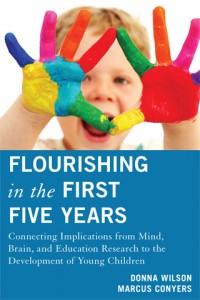Excerpt
 Brief Table of Contents
Brief Table of Contents
Chapter 1 Plasticity and Potential: Connecting Research on the Developing Mind and Brain to Early Learning
Chapter 2 Ten Facts About the Amazing Human Brain
Chapter 3 Nurturing the Brain and Body: Nutrition and Movement
Chapter 4 Cultivating Optimism: How Positive Emotions Support Learning
Chapter 5 Playing with Language: The Power of Conversation and Reading Aloud
Chapter 6 Problem-Solving, Creativity, and Thinking Skills: Early Stages of Children Taking Charge of Their Learning
Chapter 7 Addressing Risks to Healthy Development
Excerpt From Chapter 6
Some people think of creativity and problem solving as quite different skills, the former associated with artistic and imaginative endeavors and the latter linked to more analytical pursuits like math and science. When it comes to how young children learn and develop their cognitive abilities, however, creativity and problem solving are closely intertwined. Young children should be given every opportunity to “create solutions” to help explore their surroundings, interact with others, process new information, and hone their thinking skills and physical abilities.
Psychologists conducting studies like those mentioned at the beginning of this chapter typically look for three components in assessing whether infants and toddlers are exhibiting problem-solving behavior: (1) they want to achieve an end state or goal, (2) achieving this end state requires a sequence of mental processes, and (3) those mental processes are cognitive rather than automatic. An infant rapping a toy hammer to make noise or shaking a water-filled toy to see how the objects suspended in it move around is engaging in actions that indicate cognitive processes at work.
To understand how closely linked creativity and problem solving are, it may be useful to take a cue from what Meltzoff and colleagues (2009) refer to as the “new science of learning,” which applies psychology, neuroscience, and education research to how humans learn. For infants and young children, learning is both computational (for example, language is learned through the sensing of statistical patterns of phonetic units that make up one’s native language) and social (infants pick up on cues from people around them about what they need to learn). In addition, “learning is supported by brain circuits linking perception and action. . . . The brain machinery needed to perceive the world and move our bodies to adapt to the movements of people and objects is complex, requiring continuous adaptation and plasticity” (p. 285).



